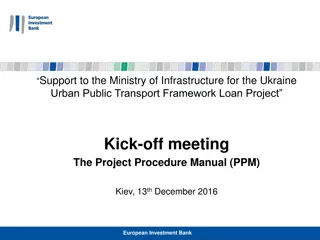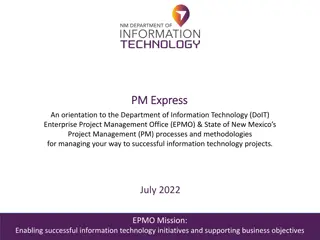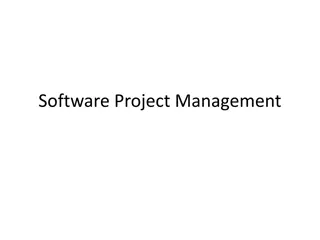
DPI as a Service: Controller Prototype and Traffic Steering Application
Explore the DPIaaS Controller Prototype and Traffic Steering Application, supported by the European Research Council. Discover the advantages of a centralized DPI service, reducing costs and improving performance. Learn about the project goals and system architecture.
Download Presentation

Please find below an Image/Link to download the presentation.
The content on the website is provided AS IS for your information and personal use only. It may not be sold, licensed, or shared on other websites without obtaining consent from the author. If you encounter any issues during the download, it is possible that the publisher has removed the file from their server.
You are allowed to download the files provided on this website for personal or commercial use, subject to the condition that they are used lawfully. All files are the property of their respective owners.
The content on the website is provided AS IS for your information and personal use only. It may not be sold, licensed, or shared on other websites without obtaining consent from the author.
E N D
Presentation Transcript
The DPIaaS Controller Prototype DPI AS A SERVICE DEEPNESS LAB This research was supported by the European Research Council under the European Union s Seventh Framework Programme (FP7/2007-2013)/ERC Grant agreement no259085.
Overview DPI as a Service Reminder The DPIaaS Controller prototype Traffic Steering Application (TSA) Evaluation Discussion
DPI as a Service CONEXT 2014
Middleboxes Policy Chains Each MB implements its own DPI engine (higher MB costs, reduced features) Each packet is scanned multiple times causing waste of computation resources DPI Engine is considered a system bottleneck in many of todays MBs (30%-80%) 4
The Advantages The idea of having a centralized DPI service instead of multiple instances of it at each Middlebox Rich Functionality Invest once for all MB Reduced Costs Cheaper MB HW/SW Improved performance Scan each packet once aggregate MatchRules Innovation Lower entry barriers
System Overview Register Rules Update Policy Chain Add Patterns DPI Traffic Steering Controller SDN Controller TS AV1 DPI1 hello DPI2 S2 S1 S4 hello S3 AV2 IDS2 hello IDS1 L7 FW1 7
The DPIaaS Controller Prototype
The Project goals Design and implement DPIaaS controller prototype Design and implement a simple TSA Deploy a functioning DPIaaS network Test the systems in complex networks Evaluate performance and compare to the article
The TSA (Traffic Steering Application) based on the SIMPLE-fying Middlebox Policy Enforcement Using SDN (SIGCOMM 2013): Network Composition Middlebox Load-balancing Support Packet Modifications Resource constraints Switch TCAM capacity
Simple TSA Network Composition Middlebox Load-balancing Support Packet Modifications Resource constraints Switch TCAM capacity
TSA - implementation Some technical issues Each policy has a unique OpenFlow Match and hosts (IP) chain Using vlan-id tags TSA make no changes the packets Should only affect policy chain traversal
TSA pseudo Code ->2 ID=1 | ->3 hello ID=2 ->3 ID=NONE ->2 10.0.0.1 Id:2 hello 1 Id:1 hello hello 10.0.0.5 2 2 1 3 3 ->2 ID=2 | ->1 10.0.02 Id = 1 RT | ->2 10.0.0.6 1 2 ID=NONE ->1 hello Id = 1 ->2 Id = 2 RT | ->4 3 4 ID=NONE ->1 10.0.0.3 10.0.0.4
TSA pseudo Code Loop problem ->2 ID=2 | ->3 ID=3 ->3 ->1,ID=1 ->2 | RT 10.0.0.1 1 10.0.0.5 2 2 1 3 3 ->2 ID=3 | ->1 10.0.02 Id = 2 RT | ->2 10.0.0.6 1 2 Id = 2 ->2 -> 3 ID = 1 |->1 Id = 3 RT | ->4 ->3 ID=4|->1 3 4 ID = 1 ->1 10.0.0.3 10.0.0.4
The DPI Controller Server for middleboxes and instances Global Match-Rules set of all the middleboxes Managing available instances Negotiating with TSA Reacting to changes
DPI Controller Strategies Rules dividing strategies Balanced Policy-chain across instances Instances placement strategy The assigned instance in the beginning of each chain
Two types of evaluation Functional evaluation using Mininet Performance evaluation using virtual machines and real OF switch
Additional Tools Necessary in order to evaluate Correctness and Performance Mocks Wrappers DPIaaS mininet creation script
Functional evaluation Testing the DPIaaS correctness in a large Fat-Tree network
Functional evaluation 2 6 8 4 1 5 7 3
Performance evaluation Deploy and Test the system in a real environment, using a real OF Switch Comparing Full system performance to the Paper s preliminary results
Testing scenario Host-1 IDS1 IDS2 Host-2 HTTP Host-1 DPI IDS1 IDS2 Host-2 Instance
Results Paper s results Full-system results
Results Paper s results Full-system results
Further Investigation Virtualization related Drops Divide and conquer experiments Using only physical servers Not using network The libpcap issue
Conclusion and Future work We have a functioning system, now what Verify the results ODL impressions DPI controller implement better strategies TSA improve TCAM utilization Load-balancing



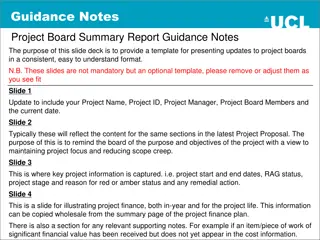

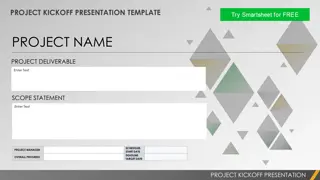

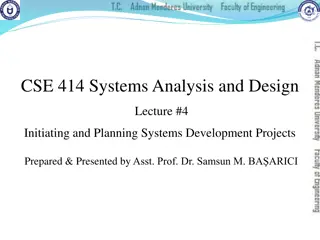
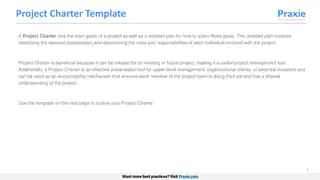
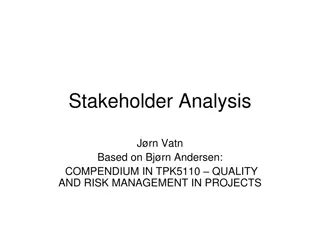


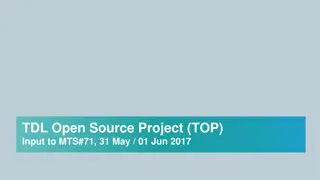



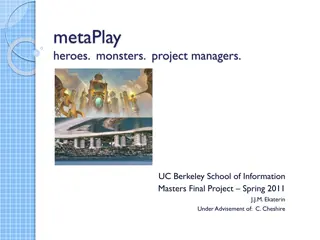
![Project Initiation Document for [Insert.Project.name] [Insert.Project.number]](/thumb/226757/project-initiation-document-for-insert-project-name-insert-project-number.jpg)

